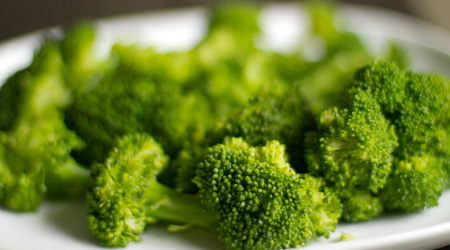How to Eat Healthy for Less

We all would like to eat healthier, but the grocery bill seems to work against that plan when a trip to the local health food store feels like a high-dollar shopping spree. With a little know-how, however, there are ways to eat well and keep the prices low, too.
Shop around
Prices on healthy products can vary greatly per store, so it pays to do some price comparison. Look for organic food brands at larger chain grocery stores; more and more, these products are available and priced more cheaply than at health food stores.
Membership clubs such as Costco and Sam's Club have increased their inventory of healthy products in recent years. Buying in bulk helps makes brands offered at these stores cheaper than regular retail. (For example, look for a three-pack of organic milk for about 50 cents less per half-gallon than comparable brands.) These larger stores can offer multi-packs of hormone-free meats and canned wild-caught salmon.
Coupons
Coupon shopping is a great way to save money on groceries, but is notoriously difficult when it comes to health food products. Small organic farms and manufacturers usually can't afford the cost of advertising, which has made paper coupons hard to come by. That said, look online at these smaller businesses' Web sites for printable coupons and codes which is a more cost-effective marketing avenue for them.
Farmers Markets
Most large grocery stores now offer at least a small section of organic produce, but often at a fairly high price. If you would prefer to buy local and pay less for your produce, meat and dairy, look for a farmers market near you. Sometimes these markets open only one day a week, when local farmers come and set up booths to sell directly to buyers. You might also have access to a permanent farmers market where the prices are lower than what you'd pay in a grocery store, but the selection is large and available when you want it.
Buy in bulk
We all know that buying a product in a bigger size can often result in significant savings, but with some health foods, this is especially true. When it comes to nuts, grains, cereals, flours and spices, bulk purchase is definitely the way to go. Most health food stores offer a wide variety of bins. You get a discount simply for the effort required to pour your item into a plastic bag.
Choose cheaper proteins
Hormone-free meats and wild-caught fish can be expensive, even when you find a better price. In your quest to eat healthy for less, save these proteins for special occasions and find alternate, less expensive proteins for your everyday meals. Eggs make excellent entrees, fixed alone or in other one-dish meals. Canned fish such as mackerel, tuna and sardines are versatile and packed with proteins and omega-3 oils. Whey powder is a great source of protein and can be mixed into drinks or baked into many dishes. Cheese can be the main protein in a meal or a great topping. And liver can be another protein-packed, low-priced addition to your diet.
Plan your meals
The best way to save money on groceries is to plan your meals in advance. With a shopping list in hand, your trips to the grocery store will fill your cart with food that will be used right away. No more waste, and you will never be in a dinner crunch to throw something together. You might find a meal planner/shopping list, app or program to be a handy way to chart out your meals for a week. Always have the ingredient list handy when you go to the store.
It's true that it costs more to eat healthy, but you don't have to go broke in the process, either. With a little advance work and some research, you can find ways to improve your diet and your grocery bill at the same time.
Elsewhere on StockMonkeys.com







